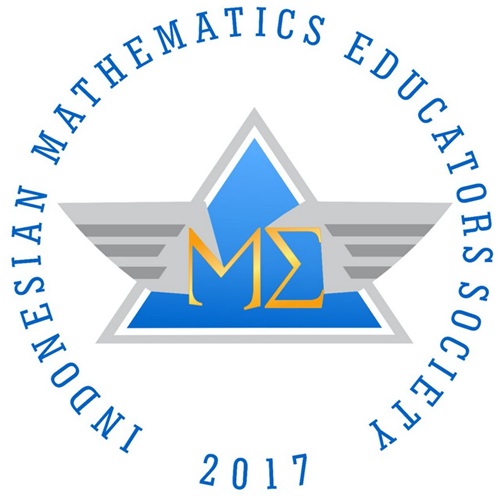Analysis of the Students Mathematics Problem Solving Ability of Grade VII on Integer Operation Material
DOI:
https://doi.org/10.22437/edumatica.v11i02.12210Keywords:
analysis, problem solving abilityAbstract
Problem solving is a measure or knowledge that needs to be mastered in solving problems related to real life. This ability is very important to build new knowledge as well as develop ideas. Therefore, the purpose of this study is to analyze the ability and describe the weaknesses of grade VII students in solving math problems in integer operating materials at SMP Negeri 1 Waingapu. Descriptive research type with qualitative approach. The instruments used were tests, interviews, questionnaires and documentation. The subjects of the study were the wakasek part of the curriculum, mathematics teachers and 7th grade students. The results found that the average math problem solving ability of students based on Polya steps is 59.86 and is in a fairly good category. This is because students do not write down the information encountered, do not analyze the problem first, do not write down the strategies used in solving the problem, lack of basic ability in doing calculations, difficulty in placing the sign of the calculation operation, not used to re-examine the answers that have been done and not used to write conclusions.
Downloads
References
Andriani, A. (2016). Peningkatan Kemampuan Pemecahan Masalah Matematik Mahasiswa FMIPA Pendidikan Matematika Melalui Model Pembelajaran Improve. Jurnal Tarbiyah, 23(1), 85.
Ariawan, R., & Nufus, H. (2017). Hubungan Kemampuan Pemecahan Masalah Matematis dengan Kemampuan Komunikasi Matematis Siswa. Jurnal THEOREMS (The Original Research of Mathematics), 1(2), 84.
Ayu, N. S., & Rakhmawati, F. (2019). Analisis Kemampuan Siswa Menyelesaikan Soal Matematika Bentuk Cerita di Kelas VIII MTS. Negeri Bandar T.A. 2017/2018. Axiom, VIII(1), 84.
Bayuningsih , A. S., Usodo, B., & Subanti, S. (2017). Analysis of Junior High School Students’ Problemsolving Ability Reviewed from Self-regulated Learning. International Journal of Science and Applied Science: Conference Series, 2(1), 51.
Bernard, M., Nurmala, N., Mariam, S., & Rustyani, N. (2018). Analisis Kemampuan Pemecahan Masalah Matematis Siswa SMP Kelas IX Pada Materi Bangun Datar. SJME (Supremum Journal of Mathematics Education), 2(2), 81.
Ifanali. (2014). Penerapan Langkah-Langkah Polya Untuk Meningkatkan Kemampuan Pemecahan Masalah Soal Cerita Pecahan Pada Siswa Kelas VII SMP Negeri 13 Palu. Jurnal Elektronik Pendidikan Matematika Tadulako, 01(02).
Marwazi, M., Masrukan, & Putra, N. M. (2019). Analysis of Problem Solving Ability Based on Field Dependent Cognitive Style. Journal of Primary Education, 8(2), 129.
Mulyani, N. M., Suarjana, I. M., & Renda, N. T. (2018). Analisis Kemampuan Siswa dalam Menyelesaikan Operasi Hitung Penjumlahan dan Pengurangan Bilangan Bulat. Jurnal Ilmiah Sekolah Dasar, 2(3), 268.
Peraturan Menteri Pendidikan Nasional Nomor 22 Tahun 2006 Tentang Standar Isi Untuk Satuan Pendidikan Dasar dan Menengah.
Polya, G., & Conway. (2004). How To Solve It: A New Aspect Of Mathematical Method. Amerika Serikat: Printeceton University Press.
Rahman, A., & Ahmar, A. S. (2016). Exploration of Mathematics Problem Solving Process Based on The Thinking Level of Students in Junior High School. International Journal of Environment & science Education, 11(14), 7279.
Saputri, R. A. (2019). Analisis Pemecahan Masalah Soal Cerita Materi Perbandingan Ditinjau dari Aspek Merencanakan Polya. Wacana Akademika: Majalah Ilmiah Kependidikan, 3(1).
Sit, M. (2012). Perkembangan Peserta Didik. Medan: Perdana Publishing.
Wildaniati, Y. (2015). Pembelajaran Matematika Operasi Hitung Bilangan Bulat Dengan Alat Peraga. Elementary, 1(1).
Yuwono, T., Supanggih, M., & Ferdiani, R. D. (2018). Analisis Kemampuan Pemecahan Masalah Matematika dalam Menyelesaikan Soal Cerita Berdasarkan Prosedur Polya. Jurnal Tadris Matematika, 1(2).
Downloads
Published
How to Cite
Issue
Section
License
Copyright (c) 2021 Eryani Hamapinda, Anggriati Ledu Ngaba, Yuliana Tamu Ina Nuhamara

This work is licensed under a Creative Commons Attribution-NonCommercial-ShareAlike 4.0 International License.







